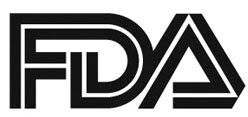FDA Adds 3 Months to Review Period for Nivolumab Plus Ipilimumab for TMB-High NSCLC
Three months have been added on by the FDA to the review period for the supplemental biologics license application for the frontline treatment combination of nivolumab plus low-dose ipilimumab for patients with advanced non–small cell lung cancer with tumor mutational burden ≥10 mutations per megabase.

Three months have been added on by the FDA to the review period for the supplemental biologics license application (sBLA) for the frontline treatment combination of nivolumab (Opdivo) plus low-dose ipilimumab (Yervoy) for patients with advanced nonsmall cell lung cancer (NSCLC) with tumor mutational burden (TMB) ≥10 mutations per megabase (mut/Mb).1The new action date for this decision is May 20, 2019.
This extension follows the submission of updated data from the pivotal phase IIICheckMate-227 trial. The sBLA was initially accepted by the FDA in June 2018 based on data showing that the 1-year progression-free survival (PFS) rate was 43% for patients with high TMB (≥10 mut/Mb) assigned to the immunotherapy combination versus 13% in patients assigned to platinum-doublet chemotherapy.2,3
The median PFS was 7.2 months versus 5.5 months, respectively, representing a 42% reduction in risk of disease progression or death (HR, 0.58; 97.5% CI, 0.41-0.81;P<.001). The combination was well tolerated and safety was similar to previous results with the therapies. The rate of grade 3/4 treatment-related adverse events (TRAEs) was 31% in the immunotherapy combination arm versus 36% with chemotherapy.
The updated data from CheckMate-227 submitted by Bristol-Myers Squibb, the manufacturer of both immune checkpoint inhibitors, showed that the median overall survival (OS) for the combination in patients with TMB ≥10 mut/Mb was 23.03 months compared with 16.72 months for the chemotherapy arm (0.77; 95% CI, 0.56-1.06). Among patients with TMB <10 mut/Mb, the median OS was 16.20 months versus 12.42 months, respectively (HR, 0.78; 95% CI, 0.61-1.00). The additional data were also submitted to EU regulatory authorities for an ongoing review of an application for the same indication.
The data submitted to US and EU regulatory authorities represent part 1 of the CheckMate-227 trial in patients with stage IV or recurrent NSCLC who had not received prior treatment. Patients with a PD-L1 expression level ≥1% were stratified into squamous and nonsquamous groups and assigned to 3 mg/kg of nivolumab every 2 weeks plus 1 mg/kg of ipilimumab every 6 weeks (n = 139), 360 mg of nivolumab plus platinum-doublet chemotherapy depending on histologic subtype (n = 71), or 500 m2of pemetrexed plus 5 or 6 AUC of carboplatin or 75 m2of cisplatin every 3 weeks for 4 cycles (n = 160).
The objective response rate was 45.3% with the immunotherapy combination versus 26.9% with chemotherapy. Among responders, 68% had an ongoing response after 1 year with nivolumab/ipilimumab, versus 25% with chemotherapy.
The median PFS did not favor the combination in the overall population (4.9 vs 5.5 months), though the combination was associated with a higher 1-year PFS rate (30.9% vs 17.0%; HR, 0.83; 95% CI, 0.72-0.96). Among patients with a low tumor mutational burden (<10 mutations/megabase), the median PFS was 3.2 months with nivolumab plus ipilimumab versus 5.5 months with chemotherapy (HR, 1.07; 95% CI, 0.84-1.35).
In TMB-high patients assigned to the immunotherapy combination, 24.4% were still on treatment at the January 24, 2018, database lock compared with 3.1% treated with chemotherapy. Of patients initially assigned to chemotherapy, 30% received subsequent immunotherapy.
Subgroup analysis showed that the combination improved PFS among patients with PD-L1 expression ≥1% and <1%. The combination also improved PFS in both the squamous and nonsquamous subtypes.
CheckMate-227 also compared chemotherapy versus nivolumab monotherapy among patients with ≥13 mutations/megabase and PD-L1 ≥1%. Median PFS was 4.2 months with nivolumab compared with 5.6 months with chemotherapy (HR, 0.95; 95% CI, 0.61-1.48;P= .78). Among patients with ≥10 mutations/megabase and PD-L1 ≥1%, median PFS was 7.1 months with nivolumab plus ipilimumab versus 4.2 months for nivolumab monotherapy (HR, 0.75; 95% CI, 0.53-1.07).
Rash, diarrhea, and anemia (1.6% each) were the most common grade 3/4 TRAEs in the combination arm. Twelve percent of patients in the combination arm discontinued due to TRAEs compared with 4.9% in the chemotherapy arm and 6.9% in the nivolumab monotherapy arm.
References:
- Bristol-Myers Squibb Provides Update on the Ongoing Regulatory Review of Opdivo Plus Low-Dose Yervoy in First-Line Lung Cancer Patients with Tumor Mutational Burden ≥10 mut/Mb. Bristol-Myers Squibb. Published October 19, 2018. Accessed October 21, 2018. https://bit.ly/2ySdgOC.
- Hellman MD, Ciuleanu T, Pluzanski A, et al. Nivolumab (nivo) + ipilimumab (ipi) vs platinum-doublet chemotherapy (PT-DC) as first-line (1L) treatment (tx) for advanced non-small cell lung cancer (NSCLC): initial results from CheckMate 227. Presented at: 2018 AACR Annual Meeting; April 14-18, 2018; Chicago, Illinois. Abstract CT077. 2017;35(suppl 4S; abstr 350).
- Hellman MD, Ciuleanu T, Pluzanski A, et al. Nivolumab plus ipilimumab in lung cancer with a high tumor mutational burden [published online April 16, 2018].N Engl J Med. doi: 10.1056/NEJMoa1801946.








